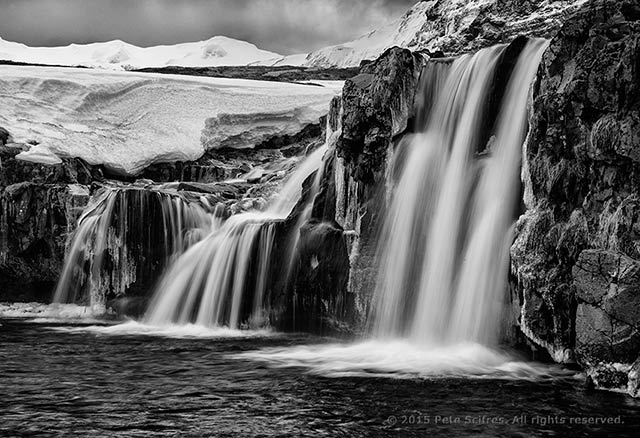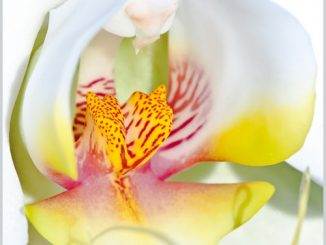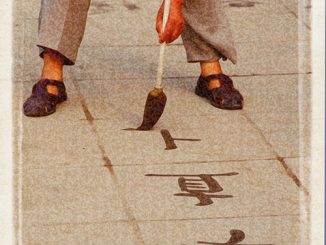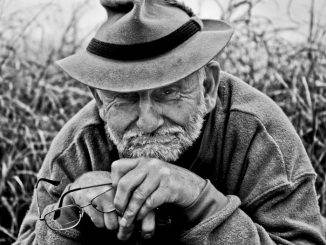Whether you travel near or far, sometimes it is just a matter of changing your vantage point that can change a so-so image into something quite different – a stunning image created by few.
Pete Scifres was able to travel to beautiful Iceland, but the difference is in how he changed his point of view and perspective.
Three Waterfalls by Pete Scifres

Subject: Kirkjufellsfoss Waterfalls – NW side of Iceland’s Snaefellsnes Peninsula
Conditions: “Kirkjufellsfoss is one of the world’s most photographed waterfalls, but almost all the photos are made from a small cliff that looks down at the falls. I thought getting in close underneath them might work well, so I carefully worked my way down a slippery embankment.”
NOTE:Always keep safety first in your mind as you are moving about. It is far more important than a photograph. Do be careful out there.
Composition:
1. Diagonals and triangles
2. Layers
3. Depth of field
4. Contrast in color and textures
5. Sense of cold
Noella’s Comments:
As you look over the general diagonal structure of this image, taking the viewer’s eye from the front to the back of the image, there is a series of several opposing diagonals created by the waterfalls. As one dissects the image even further, all the triangles come into play, from the strong base of the lake at the bottom of the falls and the main triangle encompassing all of the waterfalls, to the body of snow in the mid-left section on up to the snow covered mountain peaks. Look even closer – see how many other angles and triangles you can find. All of these diagonals and triangles work harmoniously, adding tremendous strength and defining the division of space within the image frame.
In addition, there are numerous layers or levels that intrigue you as you move through the image, starting with the lake in the foreground to the hanging icicles and the water rushing over the rocks. As you move towards the background you encounter the heavy bank of snow and ice draped over another layer of rock and on up to the distant mountains. All of these layers we see clearly, but others are only implied, such as the water that rushes down the hillside to join in with the waterfalls. Regardless, the layers add interest to the image and contribute to the overall success of it.
When you want to take advantage of the visual layers within a scene, use a wide angle lens and stop it down to give great depth of field. When I talk about stopping it down, that means that the aperture setting might be in the f/16 to f/22 range. In turn, stopping down the aperture (f/22) will make the shutter speed slower (1/30th) in order to maintain good exposure.
There is a strong contrast in both color and texture. By converting to black and white the soft flow of the falls and the white snow stand out against the shades of gray and black. It also makes the various textures of the many elements within the scene more apparent.
Learning how to use the elements of design, such as textures, shapes, and lines all help in making a photograph stand out.
One of the questions frequently asked is, “How does one get a silky, blurred look to water?” That look is a result of two main components – how fast the water is moving and how slow the shutter speed is. When you want to do this, use a tripod and set the camera to Shutter Priority. Move the shutter speed to about 1/30th of a second and make an image. Your camera will set the correct aperture to get a good exposure, but the water speed and shutter speed control how “fuzzy” the water will be. If it is too fuzzy, then speed up the shutter to 1/60th. Not fuzzy enough? Slow it down to 1/15th or maybe even 1 sec., 3 sec. or more until you get the look you like. A neutral density filter may be necessary so the image is not over exposed. Try to keep your ISO around 100.
And last, but certainly not lease… If one can transmit a feeling or sense of place through ones image, it will indeed be dynamic. Pete’s image conveys a feeling of it being very cold, not just because of the snow and ice, but because of the conversion to black and white. It creates more contrast, which in turn adds to the sense of cold.
Pete, this is a really exceptional image of a beautiful landscape. Thank you so much for sharing it with us.




Leave a Reply